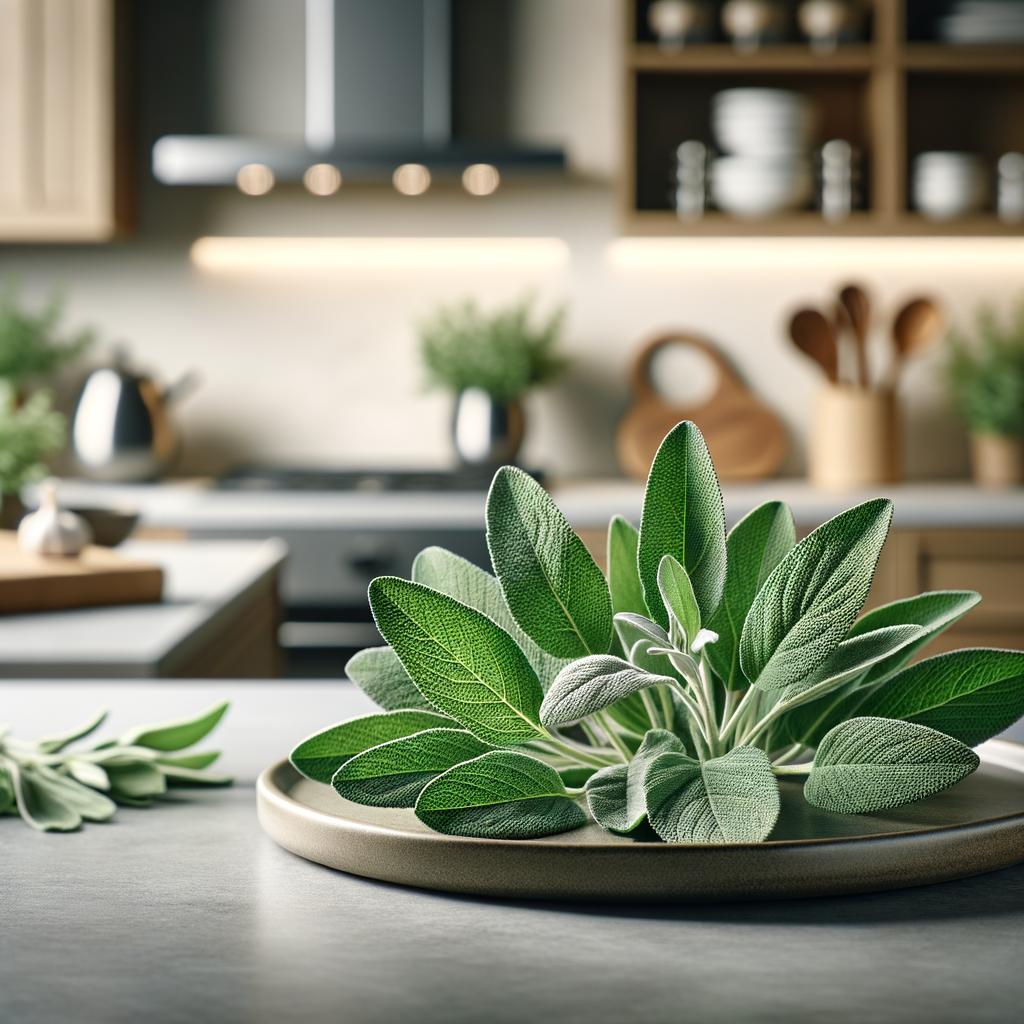Fresh Sage

Description
Ah, the enchanting Sage, a culinary herb with a reputation that precedes it. Its name alone, derived from the Latin "salvare" meaning "to save", evokes a sense of healing and protection. Sage is a strikingly beautiful plant, with velvety, oblong leaves that bear a soft, grey-green hue. The texture is nothing short of a sensory delight, with a soft, fuzzy feel that invites touch. Its flavor profile is robust and earthy, with a delicate balance of bitterness and a hint of mint. The aroma is equally captivating, a potent mix of sweet and savory with a camphor-like undertone. What sets sage apart from its herbaceous counterparts is its resilience. Unlike most herbs, sage retains its flavor even after long cooking times, making it a favorite in hearty, slow-cooked dishes.
Primary Uses
Sage is a versatile herb that has found its way into the heart of many cuisines. In Italian cooking, it is a key component in Saltimbocca, a veal dish, and is often paired with butter to dress gnocchi. It is also a staple in British cuisine, particularly in the preparation of Lincolnshire sausages and the traditional sage and onion stuffing. Beyond its culinary uses, sage has been used medicinally for centuries. It has been hailed for its anti-inflammatory and antioxidant properties and used in spiritual practices for cleansing and protection.
History
The history of sage is steeped in lore and tradition. It was highly regarded by the Romans, who considered it a sacred herb. The Greeks used it as a ‘coronary herb’ because they believed it could prevent aging. During the Middle Ages, sage was one of the ingredients in Four Thieves Vinegar, a concoction believed to ward off the plague. Over time, its use has evolved from a medicinal herb to a culinary favorite, with its unique flavor earning it a place in kitchens around the world.
Nutritional Information
Sage is a nutritional powerhouse, rich in a variety of vitamins and minerals. It is an excellent source of Vitamin K, and also contains good amounts of Vitamin A, calcium, and iron. It is low in calories but high in flavor, making it a great choice for those who want to add taste without adding extra calories. Sage also contains rosmarinic acid, a potent antioxidant, and anti-inflammatory compound. Compared to similar herbs like rosemary and thyme, sage holds its own with its unique nutritional profile and health benefits. The romantic history, versatile uses, and robust nutrition of sage make it a truly remarkable herb.

